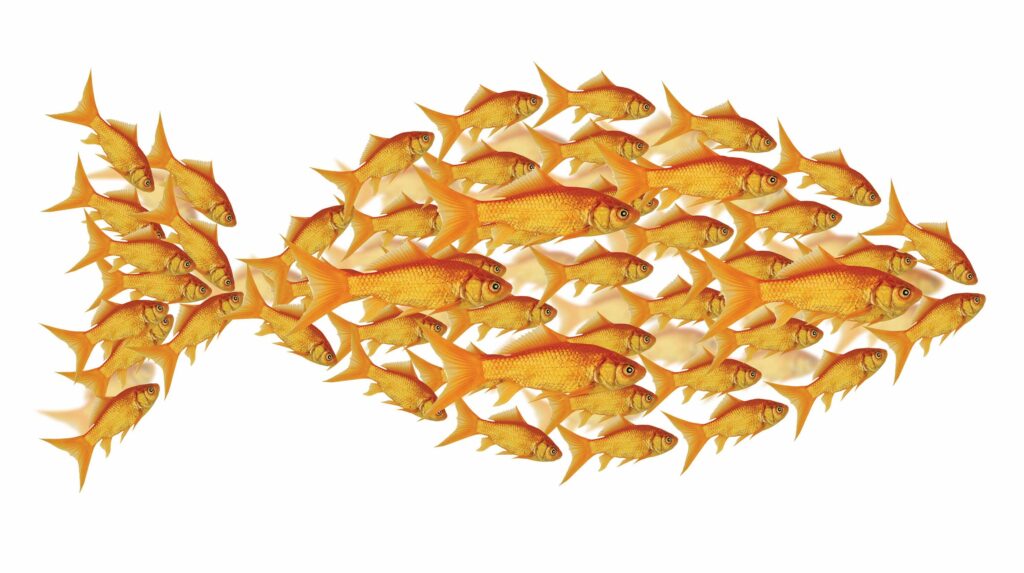CROWDSCIENCE:
Why are fish
fish-shaped?
Every week on BBC World Service, CrowdScience answers listeners’ questions on life, Earth and the Universe. Tune in every Friday evening on BBC World Service, or catch up online at bbcworldservice.com/crowdscience

The classic fish-shaped body — a squashed teardrop with a pointed nose and tapered tail — has evolved time and again. There are tuna shaped like this, sharks, marlin, mackerel and thousands of other species that spend a lot of time swimming. The reason it’s so common comes down to the fact that water is around 800 times denser than air, and much stickier, which means it takes far more energy to move through it. You can feel the difference, when swishing your hand through water compared to air. Being fish shaped, or ‘fusiform’, allows a body to cut through the water while creating minimal drag. This is the best energy-saving shape for swimming animals, including not just fish, but also dolphins, whales, and extinct ichthyosaurs.
Other components of the classic fish shape are the fins, in particular the tail or ‘caudal fin’, which swishes from side to side to create propulsion. Fish with different swimming habits have differently shaped caudal fins. Tuna and other fast swimmers tend to have a forked or crescent-shaped tail which is good for long-distance, endurance swimming. Fish such as groupers and barracudas have much wider caudal fins, which are harder work to push through the water but excellent for putting on quick bursts of speed when they ambush prey over short distances.
Of course, there are many ways of being a fish and not all are superb swimmers. Many other body shapes have evolved among slow and sedentary fish, from S-shaped seahorses to four-legged frogfish and square boxfish. HS
